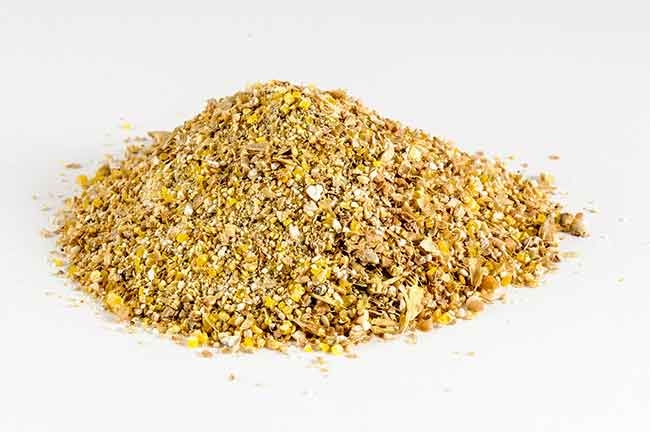
Cargill Nutrition System
By Treena Hein
Features Nutrition and Feed Research Poultry Research ResearchNew cutting-edge software feed decision system provides real-time access to growing amount of data
 A new proprietary feed formulating platform combines nutrient analysis of feed ingredients from all over the world. Dreamstime Photo
A new proprietary feed formulating platform combines nutrient analysis of feed ingredients from all over the world. Dreamstime Photo
Cargill has launched a new proprietary feed formulating platform called the Cargill Nutrition System (CNS). It combines nutrient analysis of feed ingredients from all over the world, and is updated constantly with the latest feed research and Cargill ingredient sourcing – all to provide livestock producers with clarity and consistency in making feed decisions.
The database behind CNS is comprised of over 2 million nutrient samples, covering more than 200 ingredients and 10 million annual nutrient predictions, explains Dr. Jason Shelton, Cargill Animal Nutrition global technology application director. “This data is combined with the knowledge and experience of Cargill Animal Nutrition’s 18,000 employees, including more than 500 research and development professionals,” he says. “It’s all about providing customers with certainty in feed application to achieve the desired results, rather than just a ‘best guess.’”
What stands out about the CNS is that wherever producers are located in the world, and no matter what their production target goals, they will receive unique feed formulations. The system accounts for climate factors, nutrient-content requirements and cost considerations of available ingredients. Vitamin D and Omega-3 ingredients are included in the system. Shelton says that the specificity of CNS can help farmers achieve similar or better production results at a lower cost, at the same time reducing nitrogen and phosphorus supplementation with a consequent excretion reduction anywhere from 10 to 40 percent. Better for producers and better for the planet.
Recently, poultry customers in Indonesia went through a CNS review process. It was discovered that by decreasing levels of crude protein and changing amino acid and fiber levels in the feed, farmers would see improved animal performance along with better feed cost per unit of production. The wetness of the litter was reduced as well when the feed changes were made. CNS was also instrumental in a recent trial in Switzerland, where a reduction in calcium and phosphorus levels and an increase in phytase in broiler feeds led to better feed costs per unit of production and easier compliance with local environmental legislation. The amount of phosphorus declared on the label of the feed was reduced by more than 10 percent, which allowed farms using the feed to meet government regulations relating to having a balanced nutrient input/output.
CNS is also built into Cargill’s MAX modelling system to provide producers with alternative options, if for example, a major crop failure occurs or the price of common ingredients like corn or soy spikes, Shelton explains. “In the U.S., Canada and Mexico, CNS employs the MAX modeling system in pork and beef in the U.S. and Mexico, and for dairy and pork in Canada,” he notes. “It is now being rolled out for poultry globally. A Canadian pilot project will begin late this summer/early fall and is slated for full deployment across North America during summer 2016.” Shelton says the MAX modeling system matches availability of supply for ingredients, with farm needs or predicted needs to meet production goals. “So, if you have this or that ingredient mix, MAX will give you the price change and the performance prediction change,” he explains. “It’s the CNS with a prediction model.” For its part, Cargill provides its own feed (under the Purina and Nutrena brands) and pre-mixes (under the Provimi brand) in every province, and all Cargill feed products are now being developed using CNS.
In addition to MAX modelling, CNS also supports ‘Reveal,’ a system that analyzes ingredient variability and nutrient content. It’s useful for farmers who make their own feed, which is gaining in popularity among Canadian poultry producers. It’s estimated that the percentage who make their own feed is as high as 30 to 40 percent, depending on the region. “The customer could have ten different corn meals, or ten different soybean samples for example,” Shelton says, “and using the analysis results, is assisted with choosing ingredients for his or her own formulations.” ‘Reveal’ is also licensed to feed mills.
In terms of specific environmental or regulatory issues in Canada that CNS helps solve, Shelton says that “By implementing CNS in Canada, emissions of nitrogen to the environment can be reduced. This is because CNS allows for a reduction of the total protein that is fed to animals, resulting thus in better utilization of dietary nitrogen, even with better performance of animals.”
“Reductions in nitrogen and phosphorus excretion are two important environmental concerns,” adds Dr. Bruno Marty, director of nutrition for Cargill’s animal nutrition business in Canada. “Excessive nitrogen excretion in poultry primarily results from an amino acid imbalance between feed supply and animal demand. Through the more accurate description of digestible amino acids, CNS reduces these imbalances and consequently waste.” Marty says the same concept applies to phosphorus, where contribution from plant-based feedstuffs is poorly digested by poultry. For this nutrient, CNS additionally estimates the quantity of phosphorus liberated by the application of phytase enzyme technology which enhances phosphorus digestibility and thus nutrient efficiency.
Marty agrees that every region in Canada faces specific feed challenges which change with shifting ingredient market conditions and CNS is designed to help with that. “A CNS analysis might find the best value may come from the use of non-traditional feedstuffs and by-products,” he says. “It’s all about helping producers to more accurately assess for digestible nutrients to support animal performance and long-term business goals.”
Print this page